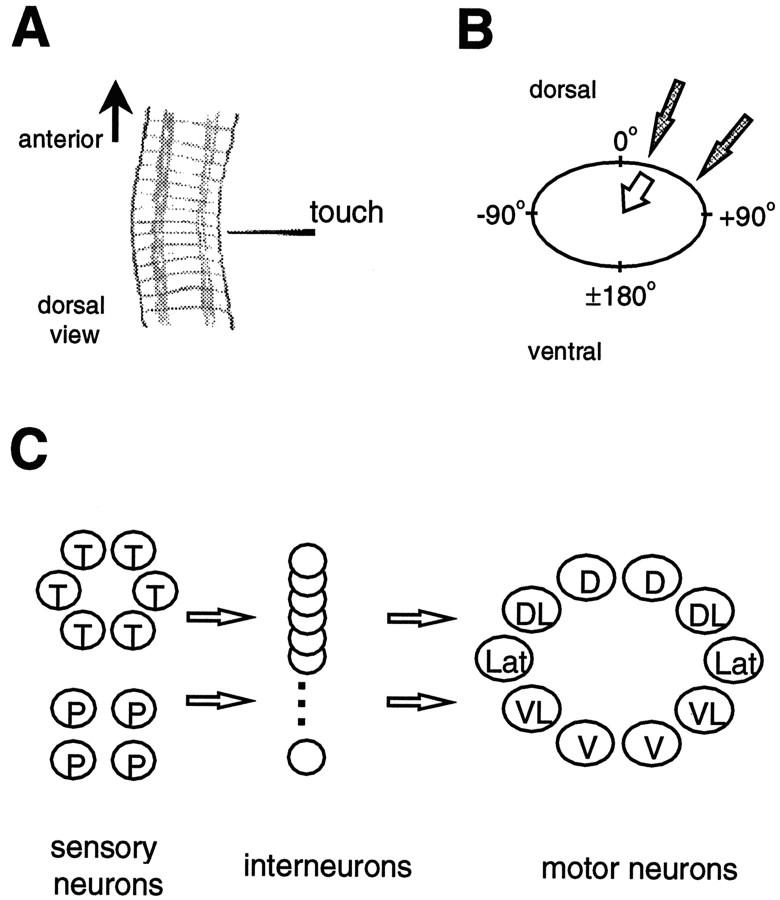Fig. 1.
The local bend behavior and network.A, Illustration of three segments of the leech midbody, producing a local bend (dorsal view, anterior is up). Each segment consists of five annuli, and each annulus forms a ring around the body perimeter. A touch to the lateral body wall elicits a bend directed away from the touched site. The bend results from shortening of longitudinal muscles near the touched site.B, Schematic of the body perimeter in cross section showing the convention for defining body wall location: dorsal midline (θ = 0°), ventral midline (θ = ±180°), right lateral (θ = +90°), and left lateral (θ = −90°). Shaded arrowsgive two examples of different stimulus locations; the unfilled arrow gives an example of a bend direction. C, Schematic outline of the local bend neuronal network. Two classes of mechanosensory neurons (T and P) connect to a layer of interneurons (∼30, with 17 identified so far; Lockery and Kristan, 1990b), which in turn connect to five classes of motor neurons that innervate longitudinal muscles in different regions of the body wall: dorsal (D), dorsolateral (DL), lateral (Lat), ventrolateral (VL), and ventral (V). There are also two classes of inhibitory motor neurons (not shown).

